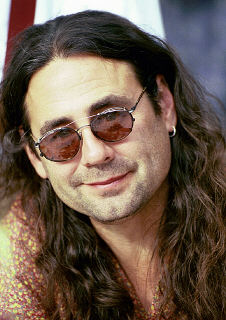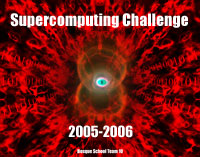Keynote speaker--Dr. Neo Martinez

My mother made him do it. She was working to get my family through grad
school and pregnant with their third child so it's not like dad could say
no. So my father named me Neo Damian after a laser element dad was studying
called neodymium. I grew up raising cows and horses and then enrolled at
Cornell University hoping to become a veterinarian. Ecology proved even
more fun and interesting and, after a 4 year break traveling and working
as a carpenter, I finally finished my bachelor's at Cornell and then a
Master's at University of Wisconsin at Madison and a Master's and Ph.D.
at the University of California at Berkeley. Postdoctoral fellowships from
the National Science and Ford Foundations at University of California's
Bodega Marine Station and Imperial College's Center for Population Biology
supported me to continue my research. I then went on to teach and conduct
research as a professor at Cornell and San Francisco State University before
founding the Pacific Ecoinformatics and Computational Ecology (PEaCE) Lab
along with his two close colleagues, Jen Dunne and Rich Williams. Our PEaCE
Lab uses ecoinformatics (the study and organization of ecological information)
and computer models to promote awareness of ecological interdependence
through research, development, and education. We do this while investigating
the structure, function, and dynamics of diverse networks of organisms
interacting with each other and their environment. I currently serve as
President and Director of the PEaCE Lab based in Berkeley California with
PEaCE "pods" in Santa Fe (NM), Santa Cruz (CA), Gothic (CO), and Darmstadt
Germany where he and his former postdocs, Jen, Rich, and Uli Brose, conduct
research together.
My research career began studying the structure of complex food webs that
depict who eats whom among the many species of plants and animals occupying
habitats such as lakes, rivers, forests, deserts and islands. I assembled
the food web of Little Rock Lake in northern Wisconsin and used it and
other data available in the 1990's to help overturn the diversity-complexity
paradigm of "scale-invariant" food-web structure while trying to increase
the quality and rigor of food-web data and analyses. In 2000, Rich and I
invented the "niche model" which successfully generates food webs practically
indistinguishable from the largest and most complex natural food webs then
available. Jen, Rich and I then showed that the niche model also successfully
predicted the network structure of newly available marine food webs and that
complexity can increase the robustness of ecological networks to species loss.
Following this work on network structure, Uli, Rich and I then explored the
nonlinear dynamics of these food web networks describing interacting
populations of many species. This work helped solve the mystery of how
ecosystems persist in nature despite their incredible, and theoretically
improbable, diversity and complexity. The solution involves a mix of the
network structure of food webs, the body sizes of predators and their prey,
and subtle aspects of animal behavior. These factors are incorporated into
sophisticated computer simulations and visualizations of complex ecological
networks that form the core of PEaCE Lab research. This work includes using
new WWW software and computational hardware to greatly increase the
accessibility of huge amounts of ecological information needed to improve
our understanding of complex ecological networks. More can be learned from
the PEaCE Lab's website; foodwebs.org.
Other than ecology, I enjoy playing guitar, mountain biking, snowboarding,
and supporting underrepresented minorities in science by teaching and
mentoring through the Ford Fellows program and though the Society for the
Advancement of Chicanos and Native Americans in Science (www.SACNAS.org).
|

